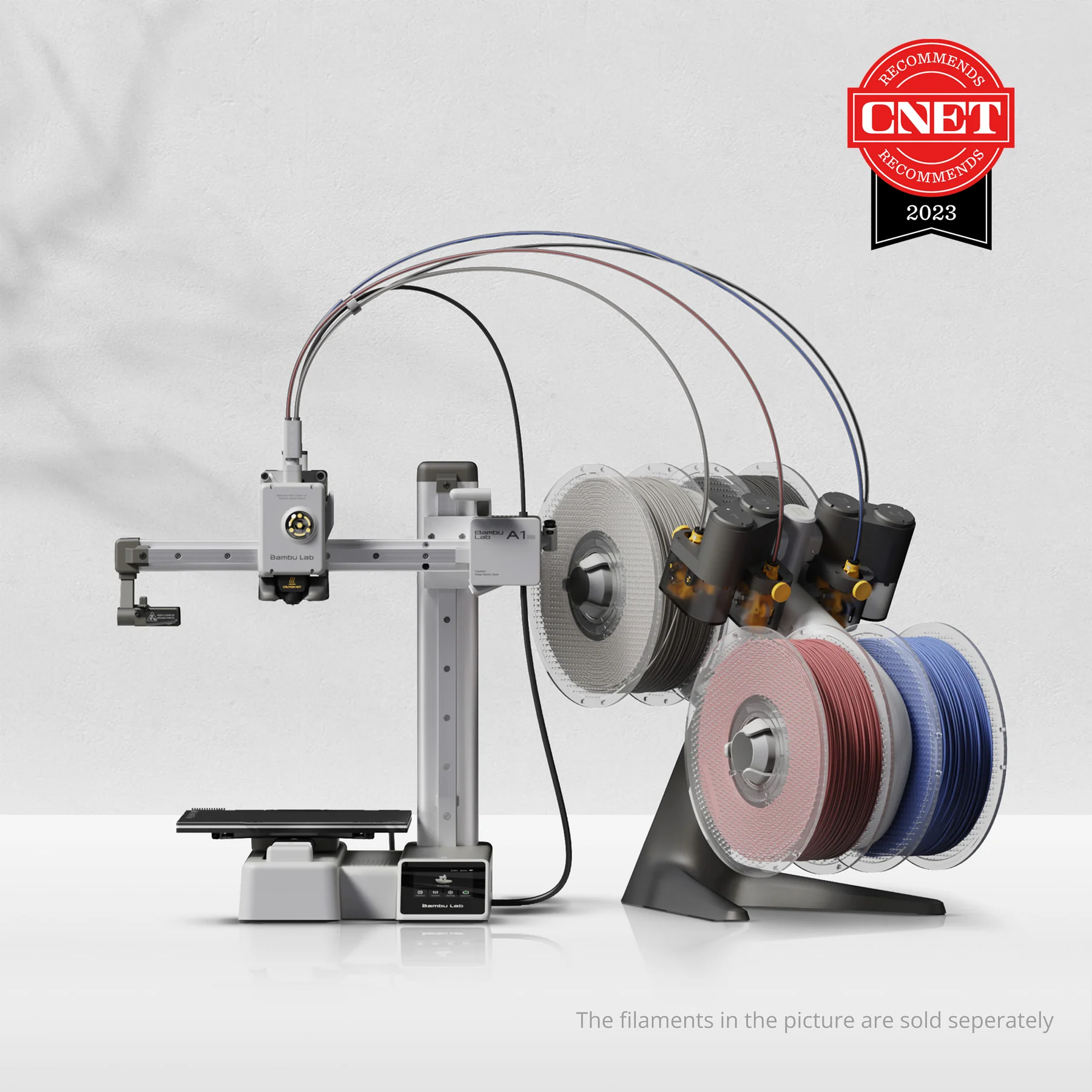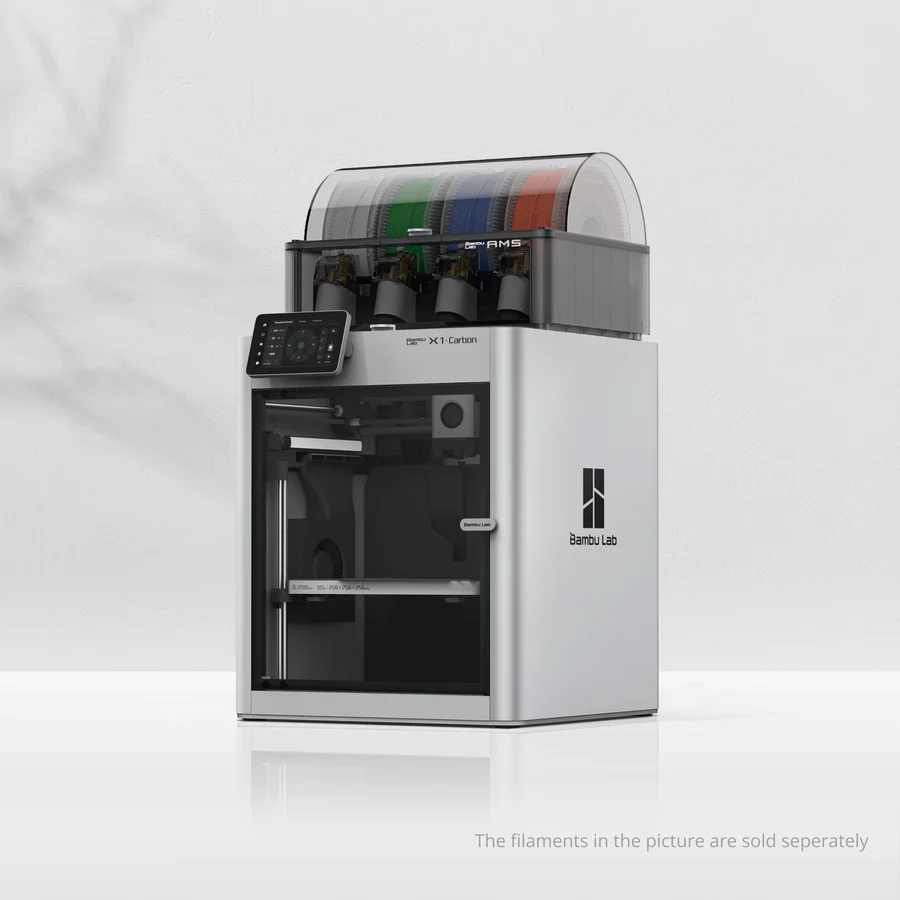Compare A1 Mini vs X1 carbon
Comparison between the best 3D printers
Choose the best 3D printer at the best price. The cheapest 3D printers are here.
Buy a 3D printer here with 3D Fila.
 |
 |
|
| Model | A1 Mini |
X1 carbon |
| Printing Material | Filament | Filament |
| Buy Filament for Bambu Lab A1 Mini | Buy Filament forBambu Lab X1 carbon | |
| Estimated price | $549,00 | $1449,00 |
| Manufacturer | Bambu Lab | Bambu Lab |
| Release Year | 2023 | 2023 |
| Print Volume [mm] | 180x180x180 | 256x256x256 |
| Printer Size [mm] | 315x347x365 | 389x389x457 |
| Weight [kg] | 5,5 | 14,13 |
| Power Loss Recovery | YES | YES |
| Enclosed printer | NO | YES |
| Bed Leveling | Automatic | Automatic |
| Filament End Sensor | YES | YES |
| Bed type | Heated | Heated |
| Power supply system | Direct Drive | Direct Drive |
| Standard nozzle | 0,4 | 0,4 |
| Maximum Nozzle Temperature [°C] | 300 | 300 |
| Maximum Bed Temperature [°C] | 80 | 120 |
| Maximum printing speed [mm/s] | 500 | 500 |
| Filament holder | YES | YES |
| Camera for supervision | YES | YES |
| Recommended filaments | PLA, PETG, TPU, PVA | PLA, PETG, TPU, PVA, PA, PA-CF, Nylon, PC |
| Recommended slicers | Bambu Studio, Super Slicer, Cura, Prusa Slicer, Orca | Bambu Studio, Super Slicer, Cura, Prusa Slicer, Orca |
| Maximum Resolution [mm] | 0,1 | 0,1 |
| Processor | 32-bit Silenciosa | Quad ARM A7 1.2 GHz |
| Display | Touchscreen 2,4'' | Touchscreen 5'' |
| Power Supply | 150 W | 350 W |
| Connectivity | Wifi, Bambu bus, Cartão SD | Wifi, Bambu bus, Cartão SD |
| Operating systems | Windows, Linux, Macbook | Windows, Linux, Macbook |
| Date of registration in the system | 2024-04-10 | 2024-04-10 |
| Release date | 2023 | 2023 |
| Extra features | The Bambu Lab A1 Mini stands out not only for its impressive speed and automatic calibration, but also for its multi-color printing capability thanks to AMS Lite. This innovative system makes multi-color printing easy, making it accessible to everyone. AMS Lite, specific to the A1 Mini, supports up to four different materials simultaneously, providing creative freedom without complications. With comprehensive sensors for energy monitoring and recovery, a camera for timelapses and Wi-Fi control, the A1 Mini and AMS Lite together offer an intuitive and advanced 3D printing experience, ideal for materials such as PLA, PETG and TPU, and designed for simplicity and fast maintenance with quick-change nozzles. | The Bambu Lab X1 Carbon revolutionizes 3D printing with stunning design, high print speeds, and a streamlined user experience. It stands out with its CoreXY system, a hotend capable of reaching 300°C, allowing for a wide range of filaments. Its LiDAR-assisted bed leveling system, vibration compensation, and AMS multicolor printing capability raise the industry standard. Print quality is impressive, with the ability to fine-tune for perfection. The X1 Carbon, with its closed build volume, not only promises but also delivers one of the most advanced 3D printing experiences available to consumers. |
| Support for multiple colors and materials (AMS and CFS) | YES | YES |
Notes * |
||
| Cost-benefit | 7 / 10 | 7 / 10 |
| Hardware | 4.8 / 10 | 6.4 / 10 |
| Tela | . | . |
| Print volume | 3 / 10 | 4 / 10 |
| Performance | 4 / 10 | 4 / 10 |
Conclusion |
| In comparing the Bambu Lab A1 Mini and the Bambu Lab X1 Carbon, both printers stand out in their own right, tailored to different users' needs and budgets. The A1 Mini, positioned as a more economical option, excels in speed and ease of use, featuring an innovative AMS Lite system for multi-color printing, making it ideal for beginners or those seeking simplicity in their 3D printing endeavors. Its compact size and lighter weight add to its appeal, facilitating easy handling and quicker setup. Conversely, the X1 Carbon represents the upper echelon of 3D printing technology, offering a larger print volume, a closed design for improved thermal stability, and advanced features like LiDAR-assisted bed leveling and vibration compensation. Its ability to handle a wider variety of filaments makes it suitable for more experienced users or professionals who require top-notch print quality and versatility. Both printers incorporate essential features like automatic bed leveling, power loss recovery, and connectivity options, ensuring reliability in their performance. However, the A1 Mini is more cost-effective, while the X1 Carbon justifies its higher price tag with superior capabilities and performance. Ultimately, the decision between the A1 Mini and X1 Carbon hinges on the user's requirements and budget. For hobbyists or those new to 3D printing, the A1 Mini offers a fulfilling experience without breaking the bank. In contrast, for professionals seeking an advanced and versatile machine, the X1 Carbon, with its premium features and capabilities, proves to be a worthwhile investment. |

